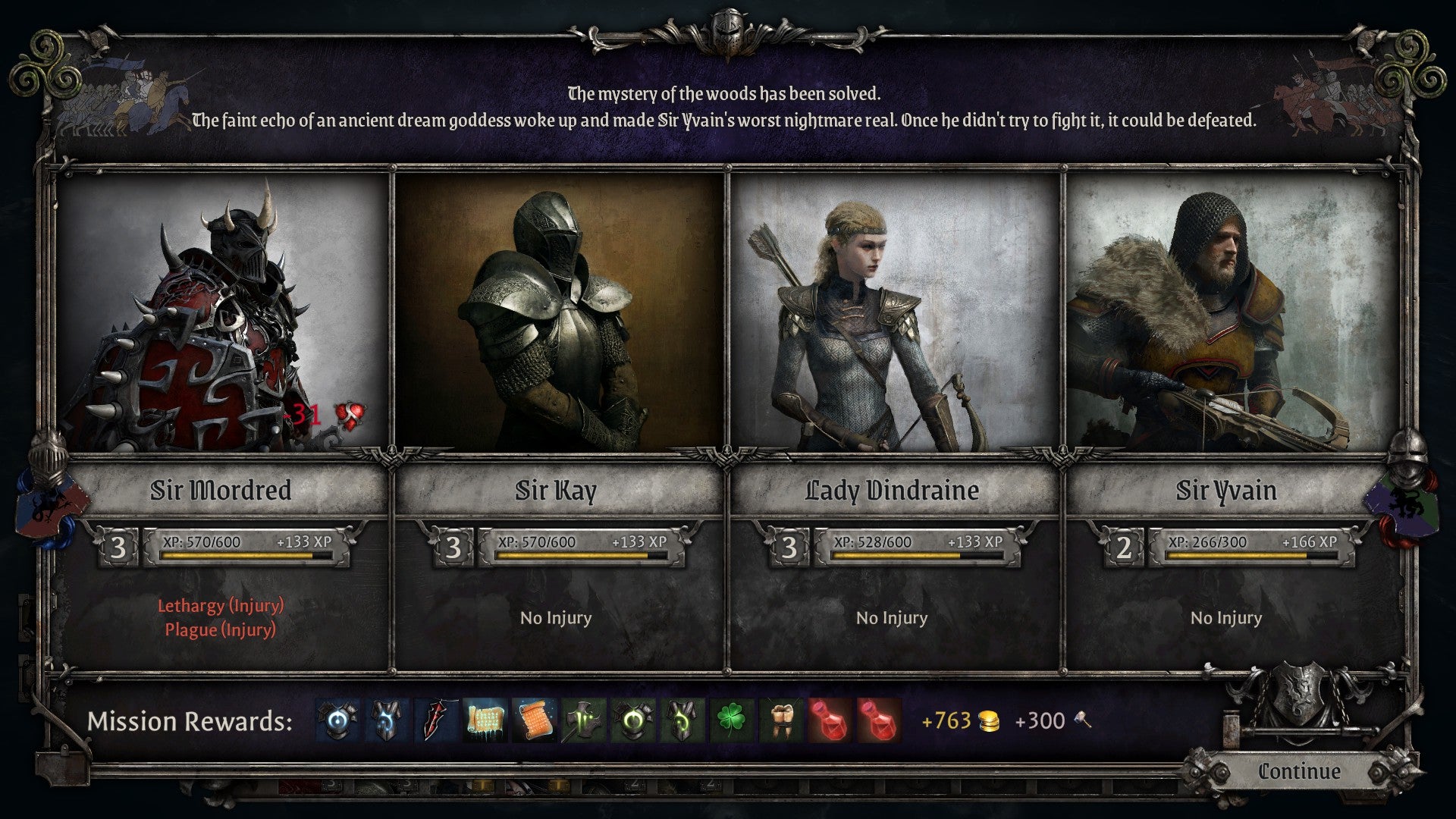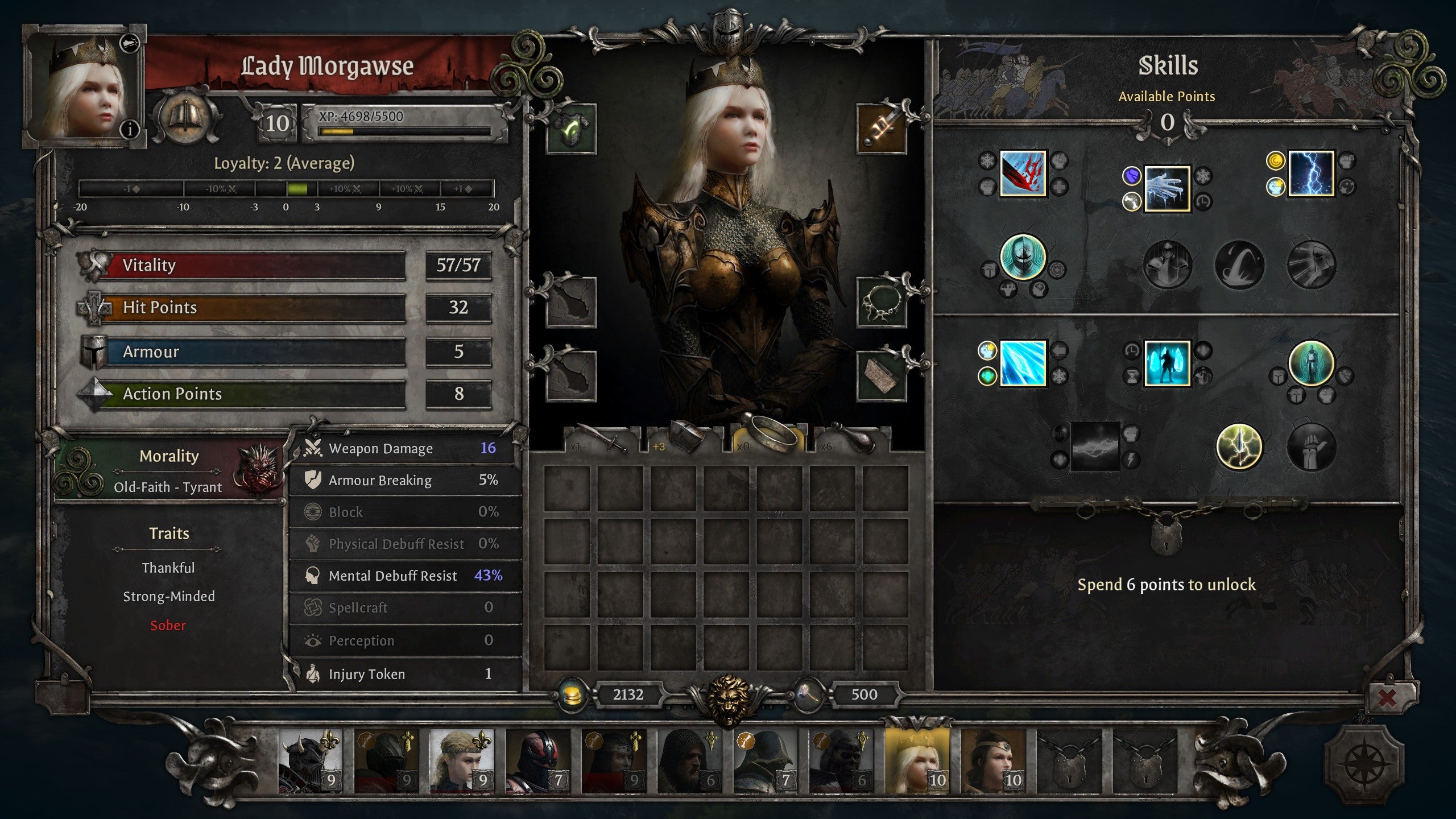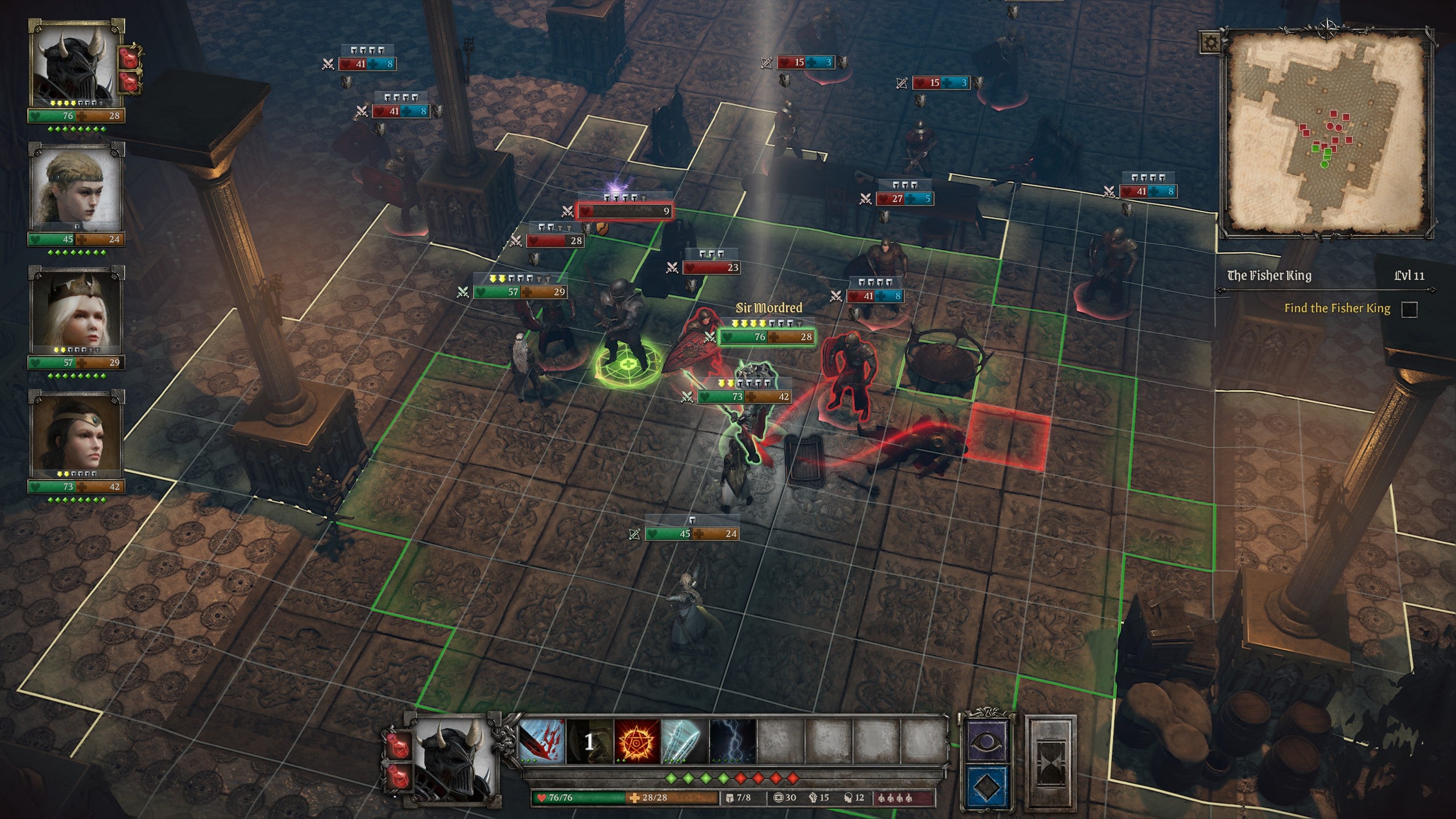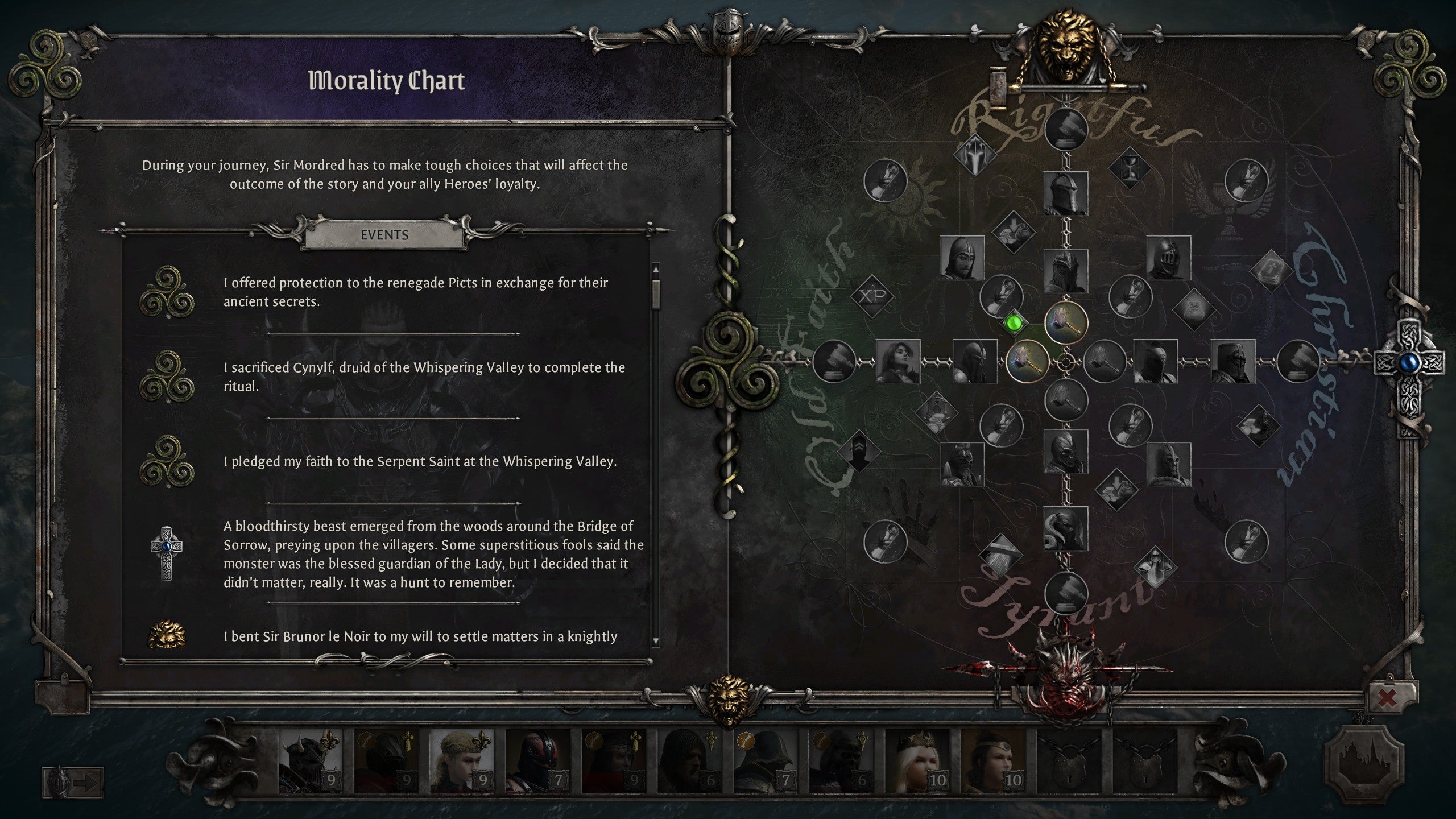King Arthur: Knight’s Tale is nothing like the Heath Ledger film of yesteryear. This is dark, gothic and grim - much more like the Batman films, actually. The game’s premise is Arthur and Morded had their fateful battle at Camlann, and killed each other, as the story goes, but then they were brought back from the dead to, well, fight each other again. It’s a bit ridiculous, in no small part because the entire supporting cast of Arthurian Legend have been brought back from the dead too, but it does give the game a distinctive viewpoint. They’ve all done their legendary deeds, you see, it’s just that now they’re all warped by weird magic. Oh and most crucial of all: King Arthur is now the bad one. You, Mordred, are the hero. King Arthur: A Knight’s Tale is from Van Helsing studio NeocoreGames, which has made King Arthur before. King Arthur: The Role-Playing Wargame came out in 2009, and there was a sequel in 2012, but whereas those games were a blend of RPG and real-time strategy, meaning huge battles with hundreds or thousands of units, this new game brings it all in on a smaller scale. It’s much more like XCOM. Missions involve running a party of four around smallish maps and fighting a few battles. There’s a bit of dialogue sprinkled in, a few choices to make, but everything is usually solved by fighting. And when you fight, it’s turn-based. The space around your heroes turns into a grid and you’re governed by available action points and abilities. It’s very familiar. After the missions, there’s a lot more to do. You’ll get the XP and loot you earned during the mission, which may mean levelling up and choosing new skills, or re-equipping your characters, and you also get a chance to do things to - and in - Camelot. You are in charge of Camelot, you see (you can have a base elsewhere - there’s a choice - but I chose Camelot) and it’s in ruins so you need to rebuild it, using money and a building resource you earn doing missions. Gradually, you rebuild places like the Cathedral and Hospice and Training Grounds, and doing so brings added functionality. The Cathedral, for instance, is where your characters’ heal injuries they suffer during battle. They can get the Plague, which isn’t helpful, or Lethargy - there’s a whole load of things. And you get rid of these by sticking them in the Cathedral for a mission or two. How long it takes depends on upgrades to the Cathedral. The Training Grounds, meanwhile, give your heroes XP and levels them up, which is particularly useful for keeping characters you don’t choose for missions up to speed. And all of your buildings can be improved by upgrades, getting you better equipment and bonuses and so on, so there’s a whole base-building side-game to consider. Central to all of this, of course, is your Round Table, where you recruit and appoint your champions, and give them titles, which is fun (and improves their loyalty, and gives bonuses) and you will attract a lot of names from legend to you. You can only take four on missions, though, so that means - as seems to be the way in RPGs - a lot of them will be sitting around, scratching their bottoms. But not here! Here, you can send them away on quests, which is a lovely nod to Arthurian legend and all the relentless questing there, though it’s all a bit po-faced here rather than silly, which is a missed opportunity if you ask me. Events pop up on the world map with outcomes to choose from, and one of them usually involves sending one of your knights away to deal with it (meaning they’ll be unavailable for a mission or two). What you choose has consequences, which is another area of the game I find appealing. Knight’s Tale records your choices and then plots them on a graph, which is a cross shape, with tyranny and benevolence at either ends of the vertical line, and Old Gods and Christianity at either ends of the horizontal line. Choices all favour one of those things, and a little marker tracks your progress. It takes a while to move it but it’s a fun kind of encouragement to role-play, though the depictions of good and evil are a bit juvenile. Choices also affect character loyalty towards you, and if their loyalty is good, they can get positive buffs, and if it’s bad, negative effects. And, naturally, they all like different things. It’s this area of the game, around the core, that I really like. I enjoy tinkering with characters’ skills and equipment and making the most out of my Camelot, and juggling my roster as I manage training, quests and injuries. And it’s all put together in an attractive, if dour, kind of way - browns and stone greys, and rusty iron hues. I appreciate the effort. What I’m less keen on is the core of the game itself, the missions, and it’s a frustratingly fundamental problem to have. There are a few reasons why. The moment to moment combat seems to lack sophistication. There are things like attacks of opportunity, cover, overwatch, buffs, debuffs, magic - all things that are familiar to players of turn-based games - but even with it all in play, there never seems to be much strategy to battle. It’s usually just ‘walk there, whack that’. Nothing ever seems to stretch the player. There’s never that feeling of having overcome, or having solved, a particularly tricky puzzle or battle. In Knight’s Tale’s defence, it does get better. As you get to higher levels and unlock more abilities - enemies too - there’s more variation on the battlefield. But not that much more. And by that time, it’s repeated a thin formula so much you’ll be all but worn out on it, leaving the game feeling like a trudge. This trudginess is reinforced by the game’s technical struggles. It’s not a looker, particularly - it can convey an atmosphere but it looks dated when up close - and this choice of grim-dark and murky mires what the game has available to work with, leaving it all feeling a bit dreary. It doesn’t run particularly well either, and while some of this is probably to do with my ageing machine, I don’t get the impression it’s well optimised. And beyond that, there’s an inherent lethargy to how it moves, to how the characters’ move and how they attack. Sometimes that works in Knight’s Tale’s favour, like when one of your armoured knights swings a giant sword like a life-sized stone chess piece would, and it comes crashing down on an enemy, but usually it lacks zip. You can hold the spacebar to speed turns up but it doesn’t eradicate the sluggishness. There’s also very little variation in missions, not just in terms of where they take place, but also what you do in them. The structure always seems to be the same: run slowly around a bit, talk to a character, follow some arrows on the map to some battles, which all feel the same, maybe fight a boss, and done. And I know “boss” sounds exciting but they aren’t. They tend to look just like the other enemies. Only one or two have stood out, and they died without much of a fuss. It’s a shame. I’d happily see fewer missions and trash battles in favour of more imagination and surprise, and it would really help getting players to more exciting enemies quicker. It could also do with being a good whack more difficult, though this is something you can rectify by dialling it up a notch at the start, and I suggest you do. Normal is too easy. There’s even a Roguelite mode if you fancy it, which doesn’t let you freely save and load. A bit more challenge might help bring more elements of Knight’s Tale into play, as you pick up more injuries and are forced to use substitute picks, and it could help battles feel less mindless. Then again, it could exacerbate an already slog-like core. There’s things to like here. Wooden as the story and characters can be, I still like the fantasy, and I find the reverence endearing. And there are some lovely touches relating to it, like duels you can fight in missions instead of pitched group battles. They’re just one-on-ones but they mix the formula up a bit. A lot could be achieved with tuning and tweaks, and I’ve no doubt NeocoreGames will continue to do exactly that. But there’s a creakier core that will be harder to solve. King Arthur: Knight’s Tale is not without its charms, then, but it’s not the once and future king you might have been waiting for. Maybe watch Fast and Furious instead.





